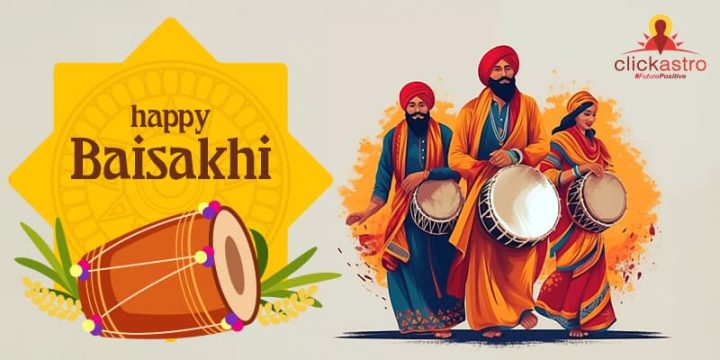Contents[hide]
Baisakhi marks the birth of Khalsa Panth
Baisakhi or Vaisakhi celebrates the onset of the Spring season in India. It is majorly celebrated in the northern states of Punjab and Haryana. Baisakhi marks the Sikh New Year’s day and has a special significance for farmers in the region as it signals the conclusion of the harvest season. According to Sikh tradition, it is believed that the 10th Guru, Guru Gobind Singh, established the Khalsa Panth on this day. In Hindu culture, Baisakhi marks the transition of the Sun to the Aries sign or Mesha Rashi and proclaims the arrival of Spring equinox as per the Sidereal calendar. In Kerala, this occasion is marked as Vishu. It is also known as Pohela Boishakh in West Bengal, Bohag Bihu in Assam, Puthandu in Tamil Nadu, Bihu in Uttarakhand, Ugadi in Andhra Pradesh and Karnataka and MahaVishuva Sankranti in Odisha.Is Baisakhi on 13th or 14th?
As per Nanakshahi or the Sikh calendar, the occasion of Baisakhi falls on April 13th. It falls on April 14th once every 36 years. But this has since been changed to April 14th for every year. It is named Baisakhi after the Hindu month Vaisakha. Baisakhi marks the first day of Vaisakha. This month is seen as the most auspicious month of the Hindu calendar. It is the first month going by the transition of the Sun and the second going by the transition of the Moon. Lord Vishnu is worshipped during this month. According to ancient history, it was on this day that Lord Vishnu took incarnation in turtle form. The Lord in the form of a turtle then held Mount Meru on his back which was used to churn the celestial ocean by Devas and Asuras in their quest of gaining immortality. The Sikh community celebrates Baisakhi with a lot of fervour. They pray and recite the writings of Guru Gobind Singh on this day. Farmers of Punjab and Haryana celebrate it as a sort of Thanksgiving day after the harvest of their crops.Is Vaisakhi a Sikh new year?
Vaisakhi or Baisakhi commemorates the Sikh New Year. It is believed that Guru Gobind Singh, the 10th Guru of Sikhs established the Khalsa Panth on this day. The Guru, it is said, dared any person who was ready to give up his life for the cause of the community to step up. From over a thousand people who had gathered to hear the Guru, five young men stepped forward. The Guru blessed them by giving Amrit and named them Khalsa (pure) soldiers. This happened in the year 1699. These soldiers were expected to follow a strict vegetarian diet, abstain from intoxicants and not cut or shave any hair from their bodies.
Another historical event connecting the Sikh community and Baisakhi was the proclamation of Ranjit Singh as the Maharaja of the Sikh Empire in 1801. A tragic event happened on Baisakhi day in the year 1919 when the British Army under the command of Colonel Reginald Dyer opened fire at a gathering of unarmed civilians, mostly Sikhs, who had assembled at Jallianwala Bagh to participate in the annual Baisakhi celebrations. Almost a thousand people died. This day is remembered as a black day in the history of India’s freedom struggle.
Read about Akshaya Trititya
What is the difference between Vaisakhi and Baisakhi?
There is no difference between Vaisakhi and Baisakhi. There is no distinction between ‘va’ and ‘ba’ in Prakrit and Apbhramsa. However, broadly speaking, Vaisakhi and Baisakhi can be seen as two versions of the same celebrations in two different communities. Vaisakhi is more of a Hindu tradition that glorifies the entry of the Sun into the Aries sign or the Mesha Rashi. Vaisakha is the first month of the solar calendar and the second in the lunar calendar. Baisakhi, on the other hand, is seen as the Sikh New Year. It is based on the tradition that the 10th Guru, Guru Gobind Singh, established the famed Khalsa Panth on this day. Baisakhi is celebrated with much fervour in Punjab and Haryana. Vaisakhi is a significant occasion for the Hindu community as a whole and is celebrated under different names in different regions. In Kerala, this is celebrated as Vishu.Read 2024 Vishu Phalam in malayalam







